Spercheidae
Spercheus
Filterfeeding water scavenger beetles
Martin Fikacek- Spercheus belli Champion, 1919
- Spercheus belli babylonicus Hebauer, 1997
- Spercheus burgeoni Orchymont, 1929
- Spercheus cerisyi Guérin Méneville, 1842
- Spercheus crenulatus Fairmaire, 1893
- Spercheus emarginatus (Schaller, 1783)
- Spercheus fimbriicollis Bruch, 1915
- Spercheus gerardi Orchymont, 1929
- Spercheus halophilus Archangelsky, 2001
- Spercheus hanseni Hebauer, 1990
- Spercheus hovanus Fairmaire, 1903
- Spercheus humeralis Régimbart, 1906
- Spercheus platycephalus MacLeay, 1825
- Spercheus platycephalus interruptus Fairmaire, 1892
- Spercheus senegalensis Castelnau, 1832
- Spercheus siamensis Hebauer, 1990
- Spercheus spangleri Hebauer, 1990
- Spercheus stangli Schwarz & Barber, 1918
- Spercheus stasimus Orchymont, 1937
- Spercheus wattsi Hebauer, 1999
Introduction
The family Spercheidae contains the only genus Spercheus with 18 described species distributed in all zoogeographic regions except the Nearctic. The highest diversity is known from tropical regions of Oriental and Afrotropical regions (Hebauer 1997, 1999; Archangelsky 2001).
Both adults and larvae are aquatic, usually inhabiting various kinds of standing waters with rich submerged vegetation. Both stages do not swim, but are frequently found “hanging” upside down below the water surface while filtering the food from it (spercheids are the only filter-feeders among recent beetles). Adults feed preferably on algae filtered from within the water surface (Rothmeier & Jäch 1984), whereas larvae feed mostly on organic remains and small invertebrates from below or above water surface (Archangelsky 1997). Eggs are laid in the egg case which is carried by the female - the egg case is attached to the metatibiae and carried below the abdomen (in this, spercheids differ from remaining hydrophilopid groups carrying egg cases, in which the egg case is attached directly to the abdomen).


Female of Spercheus emarginatus carrying egg case. © 2011 Mustafa Darilmaz
Only the larvae of the European Spercheus emarginatus and South American S. halophilus are officially described (Böving & Henriksen 1938, Archangelsky 1997, 2001), although at least those of S. cerisyi and S. belli are available in the collections. The published notes on the spercheid pupa (Cussac 1852) are controversial and the pupal morphology as well as pupation place needs to be reconfirmed by future studies.
Characteristics
Adults
Adult spercheids are rather easily recognizable from other beetle families based on the following characters:
- head strongly constricted behind eyes
- clypeus widely expanded, sexually dimorphic (with V-shaped excision in males)
- antenna 7-segmented, with distinctly enlarged antennomere 4
- mentum large, transverse
- galea long, thin, finger-like
- empodium multisetose
- anapleural sutures of mesothorax well developed, meeting anteriorly


Sexual dimorphism in clypeus shape of S. platycephalus (left: male, right: female). © 2011 Martin Fikacek
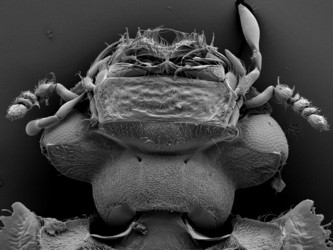
Head of S. senegalensis in ventral view. © 2011 Martin Fikacek
In addition to these characters, other characters may be helpful for recognition of beetles in this group:
- tibiae often bearing denticles
- elytra frequently with ridges or elongate tubercles
- sides of pronotum in many species undulate, lobate or even deeply lobate
Larvae
Larvae may be easily recognized from all other aquatic larvae as well as from all other beetle larvae according to the following characters:
- body myrmeleonid-shape (i.e. with abdomen widest at midlength and rather large head)
- lateral portions of abdomen with conical projections
- head prognathous (i.e. occipital foramen not shifted dorsally)
- legs and antennal slender and rather long
- gula wide, well developed
- head with 5 stemmata on each side
- maxilla with large inner setiferous projection on stipes
- labium with mentum and prementum fused into a composite circular structure
- labial palpi and ligula minute

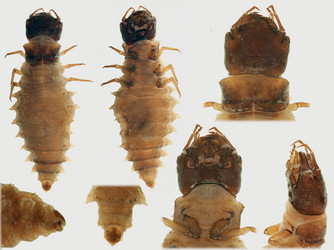
Larva of Spercheus emarginatus. © 2011 Martin Fikacek
Relationships of Spercheidae to Other Hydrophiloidea
Spercheidae is a morphologically very distinctive and homogenous, clearly monophyletic group bearing many unique larval as well as adult characters (autapomorphies) unknown for any other group of the Hydrophiloidea. Most of these autapomorphies are clearly related to the filter-feeding habits, e.g., mandible with semimembranous lobe, wide anterior pharynx, proventriculus with row of spines and enlarged labrum in adults (Beutel et al. 2001), subprognathous head, wide gula, large labium with fused prementum and mentum and lateral fringes of setae and mandible with fringe of setae in larvae (Beutel 1994, 1999). Hence, especially the larval head resembles the larvae of basal staphylinoid families. This fact is the main reason for two very different hypotheses about the placement of the Spercheidae within the Hydrophiloidea:
- a derived group within the Hydrophiloidea (the head morphology is then considered as secondarily derived from the usual predaceous hydrophiloid ancestor; Hansen 1991, Archangelsky 1998, Beutel & Komarek 2004, Korte et al. 2004, Beutel & Leschen 2005)
- sister-group to all other Hydrophiloidea or Hydrophiloidea+Histeroidea (the head morphology in then considered plesiomorphic and ancestral for all Hydrophiloidea; Beutel 1994, 1999).
Most recent studies based on morphology and molecular data support Spercheidae as the derived group within the Hydrophiloidea and place it as the sister-group to the family Hydrophilidae (Hansen 1991, Archangelsky 1998, Beutel & Komarek 2004, Korte et al. 2004), sometimes as sister to Hydrochidae (Beutel & Leschen 2005). Some tentative homologies between spercheid and staphylinoid larval head used in the analyses by Beutel (1994, 1999) seem to be, moreover, incorrect based on the study of the larval head chaetotaxy (Fikáček 2007).
Discussion of Phylogenetic Relationships
The phylogenetic relationships within the family have not been studied so far.
Taxonomy
The genus Spercheus was recently revised by Hebauer (1990, 1997), two additional species were described later by Hebauer (1999) and Archangelsky (2001). 20 valid species and subspecies are recognized to date:
- belli Champion, 1919 - Oriental
- belli babylonicus Hebauer, 1997 - Iraq
- burgeoni Orchymont, 1929 - tropical Africa
- cerisyi Guérin Méneville, 1842 - Near East and sub-Saharian Africa
- crenulatus Fairmaire, 1893 - tropical Africa
- emarginatus (Schaller, 1783) - Palaearctic region
- fimbriicollis Bruch, 1915 - tropical to subtropical South America
- gerardi Orchymont, 1929 - tropical Africa
- halophilus Archangelsky, 2001 - Argentina
- hanseni Hebauer, 1990 - south India, Sri Lanka
- hovanus Fairmaire, 1903 - Madagascar
- humeralis Régimbart, 1906 - tropical Africa
- platycephalus MacLeay, 1825 - Australian Region and islands of SE Asia
- platycephalus interruptus Fairmaire, 1892 - Near East and tropical Africa
- senegalensis Castelnau, 1832 - Near East and tropical Africa
- siamensis Hebauer, 1990 - SE Asia
- spangleri Hebauer, 1990 - SE Asia
- stangli Schwarz & Barber, 1918 - Oriental Region
- stasimus Orchymont, 1937 - tropical Africa
- wattsi Hebauer, 1999 - Australia
Fossils
Several Mesozoic fossil taxa have been originally considered as related to Spercheus (Heer 1852, Ponomarenko 1977), but the reexamination of all of them revealed these considerations as unjustified (Fikáček, unpublished data). The only fossil resembling modern Spercheus in many characters and thus possibly related to it is the recently described genus Prospercheus from the Upper Jurassic locality of Shar-Teg (Prokin 2009) – the detailed analysis of he placement of this fossil is currently in progress (Fikáček et al. in prep.).Other Names for Spercheus
- Spercheidae
- Spercheinae
- Vernacular Names: Filterfeeding water scavenger beetles
References
Archangelsky M. 1997. Studies on the biology, ecology, & systematics of the immature stages of New World Hydrophiloidea (Coleoptera: Staphyliniformia). Bulletin of the Ohio Biological Survey, New Series 12(1): 1-207.
Archangelsky M. 1998. Phylogeny of Hydrophiloidea (Coleoptera: Staphyliniformia) using characters from adult and preimaginal stages. Systematic Entomology 23:9-24.
Archangelsky M. 2001. A new Neotropical species of Spercheus Kugelann, and its larval stages (Coleoptera: Hydrophiloidea: Spercheidae). Studies on Neotropical Fauna and Enviroment 36:199-204.
Beutel R. G. 1994. Phylogenetic analysis of Hydrophiloidea based on characters of the head of adults and larvae. Koleopterologische Rundschau 64: 103-131.
Beutel R. G. 1999. Morphology and evolution of the larval head of Hydrophiloidea and Histeroidea (Coleoptera: Staphyliniformia). Tijdsschrift voor Entomologie 142:9-30.
Beutel R. G., Anton E. & Bernhardt D. 2001. Head structures of adults of Spercheus (Coleoptera: Spercheidae): their function and possible significance to staphyliniform phylogeny. Annales Zoologici (Warszawa) 51:473-484.
Beutel R. G. & Komarek A. 2004. Comparative study of thoracic structures of adults of Hydrophiloidea and Histeroidea with phylogenetic implications (Coleoptera, Polyphaga). Organisms, Diversity & Evolution 4: 1-34.
Beutel R. G. & Leschen R. A. B. 2005. Phylogenetic analysis of Staphyliniformia (Coleoptera) based on characters of larvae and adults. Systematic Entomology 30: 510-548.
Böving A. G. & Henriksen K. L. 1938. The developmental stages of the Danish Hydrophilidae. Vidensk. Medd. fra Dansk. Naturh. Foren. 102: 27-162.
Cussac, É. 1852. Moeurs et métamorphoses du Spercheus emarginatus et de l´Helochares lividus. Annales de la Société Entomologique de France 12: 617-627 + 1 pl.
Darilmaz M. & Kiyak S. 2011. A study of the family Spercheidae (Coleoptera)from Turkey. Turkish Journal of Zoology 35: 441-444.
Fikáček M. 2007. Larvae of small hydrophiloid families Spercheidae, Hydrochidae and Epimetopidae: troublemakers in phylogenetic studies. pp. 297-298. In: Fikáček M., Skuhrovec J. & Šípek P. (eds.): Abstracts of the Immature Beetles Meeting 2007, October 4-5, Prague, Czech Republic. Acta Entomologica Musei Nationalis Pragae 47: 287-306.
Hansen M. 1991. The Hydrophiloid Beetles. Phylogeny, Classification and Revision of the Genera (Coleoptera, Hydrophiloidea). Biologiske Skrifter 40:1-367.
Hebauer F. 1990. Drei neue Arten der Gattung Spercheus Kugelann aus der Orientalischen Region (Coleoptera, Spercheidae). Acta coleopterologica, 6(1): 1-8.
Hebauer F. 1997. Revision der Arten der Familie Spercheidae Erichson, 1837 (Coleoptera, Hydrophiloidea). Entomologische Blätter, 93: 9-42.
Hebauer F. 1999. Spercheus wattsi, sp. n. - a second Australian species of the genus (Coleoptera, Hydrophiloidea). Acta coleopterologica, 15(2): 5-6.
Heer O. 1852. Die Lias-Insel des Aargau’s. In: Zwei geologische Vorträge gehalten im März 1852 von Oswald Heer und A. Escher von der Linth (eds O Heer & A Escher von der Linth) 1-15, plate 1. E. Kiesling, Zürich.
Korte A., Ribera I., Beutel R. G. & Bernhardt D. 2004. Interrelationships of Staphyliniform groups inferred from 18S and 28S rDNA sequences, with special emphasis on Hydrophiloidea (Coleoptera, Staphyliniformia). Journal of Zoological Systematics and Evolutionary Research 42: 281-288.
Ponomarenko, A. G. 1977. Infraotryad Staphyliniformia. In: Arnol´di L. V., Zherikhin V. V., Nikritin L. M. & Ponomarenko A. G. (eds.): Mezozoickiye zhestkokrylye. Pp. 106-119. Nauka, Moskva. [English translation of the book: Arnol´di L. V., Zherikhin V. V., Nikritin L. M. & Ponomarenko A. G. (1992) Mesozoic Coleoptera. Smithsonian Institution and National Science Foundartion, Washington]
Prokin A. A. 2009. New water scavenger beetles (Coleoptera: Hydrophilidae) from the Mesozoic of Mongolia. Paleontological Journal 43, 660-663.
Rothmeier G. & Jäch M. A. 1986: Spercheidae, the only filter-feeders among Coleoptera. Proceedings of the Third European Congress of Entomology (Amsterdam) 1986:133-137.
Title Illustrations

| Scientific Name | Spercheus platycephalus |
|---|---|
| Specimen Condition | Dead Specimen |
| Identified By | M. Fikacek |
| Sex | Male |
| Image Use |
 This media file is licensed under the Creative Commons Attribution-NonCommercial License - Version 3.0. This media file is licensed under the Creative Commons Attribution-NonCommercial License - Version 3.0.
|
| Copyright |
© 2010 Martin Fikacek

|
| Scientific Name | Spercheus cerisyi |
|---|---|
| Specimen Condition | Dead Specimen |
| Identified By | M. Fikacek |
| Sex | Male |
| Image Use |
 This media file is licensed under the Creative Commons Attribution-NonCommercial License - Version 3.0. This media file is licensed under the Creative Commons Attribution-NonCommercial License - Version 3.0.
|
| Copyright |
© 2010 Martin Fikacek

|
| Scientific Name | Spercheus spangleri |
|---|---|
| Specimen Condition | Dead Specimen |
| Identified By | F. Hebauer (paratype) |
| Image Use |
 This media file is licensed under the Creative Commons Attribution-NonCommercial License - Version 3.0. This media file is licensed under the Creative Commons Attribution-NonCommercial License - Version 3.0.
|
| Copyright |
© 2010 Martin Fikacek

|
| Scientific Name | Spercheus emarginatus |
|---|---|
| Specimen Condition | Dead Specimen |
| Identified By | M. Fikacek |
| Life Cycle Stage | Larva |
| Image Use |
 This media file is licensed under the Creative Commons Attribution-NonCommercial License - Version 3.0. This media file is licensed under the Creative Commons Attribution-NonCommercial License - Version 3.0.
|
| Copyright |
© Martin Fikacek

|
About This Page
I would like to thank M. Darilmaz (Turkey) for the possibility to use his photos of egg-carrying female of S. emarginatus.
Martin Fikacek

Department of Entomology, National Museum, Prague
Correspondence regarding this page should be directed to Martin Fikacek at
Page copyright © 2011 Martin Fikacek
 Page: Tree of Life
Spercheidae . Spercheus . Filterfeeding water scavenger beetles.
Authored by
Martin Fikacek.
The TEXT of this page is licensed under the
Creative Commons Attribution-NonCommercial License - Version 3.0. Note that images and other media
featured on this page are each governed by their own license, and they may or may not be available
for reuse. Click on an image or a media link to access the media data window, which provides the
relevant licensing information. For the general terms and conditions of ToL material reuse and
redistribution, please see the Tree of Life Copyright
Policies.
Page: Tree of Life
Spercheidae . Spercheus . Filterfeeding water scavenger beetles.
Authored by
Martin Fikacek.
The TEXT of this page is licensed under the
Creative Commons Attribution-NonCommercial License - Version 3.0. Note that images and other media
featured on this page are each governed by their own license, and they may or may not be available
for reuse. Click on an image or a media link to access the media data window, which provides the
relevant licensing information. For the general terms and conditions of ToL material reuse and
redistribution, please see the Tree of Life Copyright
Policies.
- First online 24 April 2007
- Content changed 03 July 2011
Citing this page:
Fikacek, Martin. 2011. Spercheidae . Spercheus . Filterfeeding water scavenger beetles. Version 03 July 2011 (under construction). http://tolweb.org/Spercheus/9214/2011.07.03 in The Tree of Life Web Project, http://tolweb.org/




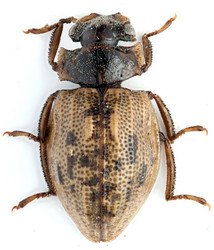

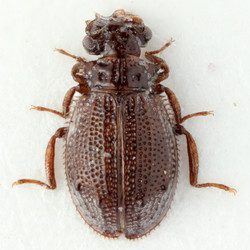
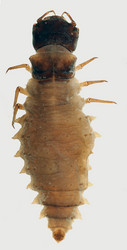


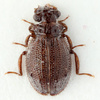



 Go to quick links
Go to quick search
Go to navigation for this section of the ToL site
Go to detailed links for the ToL site
Go to quick links
Go to quick search
Go to navigation for this section of the ToL site
Go to detailed links for the ToL site